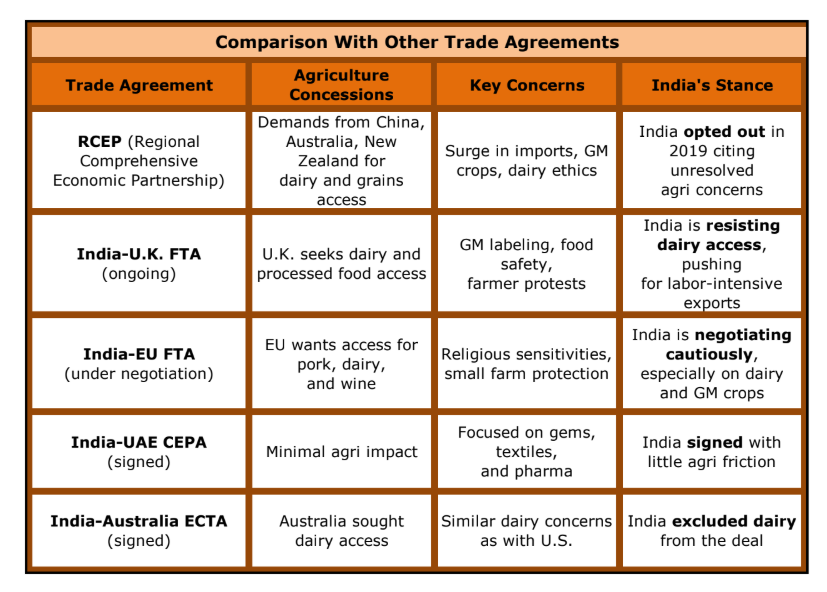Blog

Mumbai: India and the United States are on the cusp of finalising an interim trade agreement, expected to be signed soon. The deal is aimed at pausing the reciprocal tariffs imposed during the Trump administration, with July 9 set as a critical deadline.
Negotiators from both nations have made substantial progress, but a decisive hurdle remains: India’s staunch refusal to fully open its agriculture and dairy markets to American imports. Officials from the Indian delegation have described agriculture as a “non-negotiable” pillar of national interest – both economically and culturally.
While the U.S. seeks wider access to Indian markets for genetically modified crops, dairy products, and ethanol, India has cited domestic sensitivities and structural constraints. Concerns over food safety, smallholder farm vulnerabilities, and ethical dietary norms have driven New Delhi’s resistance to American agricultural standards.
India’s Ethanol Blended Petrol program — which relies on sugarcane and grains — is another sticking point. Importing U.S. ethanol could undercut domestic production and compromise energy security.
Balancing Trade Ambitions and Rural Realities
Agriculture sustains nearly half of India’s population. Experts warn that an influx of subsidised U.S. goods could destabilise rural livelihoods and reignite tensions reminiscent of the 2021 farmer protests. There are also fears that tariff concessions may erode India’s Minimum Support Price (MSP) framework, a key safety net for its farming community.
The asymmetry in farm scale and tariffs adds complexity. American farms average over 180 hectares, operate with advanced mechanisation, and enjoy low trade barriers — unlike India’s predominantly manual, micro-scale farming landscape, where tariffs range up to 150%.
Instead of making concessions in agriculture, India is pushing for expanded access for labour-intensive sectors like textiles and manufacturing, which fuel employment and export growth. The interim deal, if sealed, could potentially boost bilateral trade to $500 billion and lay the groundwork for broader economic cooperation.
India’s protective stance on agriculture mirrors its approach in other trade agreements — including the Regional Comprehensive Economic Partnership (RCEP), which it exited in 2019, and ongoing negotiations with the UK and European Union. Dairy and genetically modified (GM) crops remain consistent red lines.
As talks enter their final phase, all eyes are on whether Washington and New Delhi can bridge differences — or if agriculture will once again be the dealbreaker.
(Write to us at editorial@bombaychamber.com)








